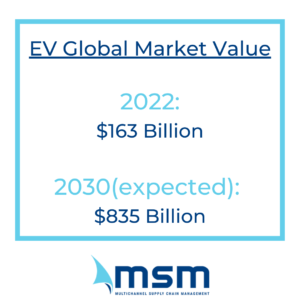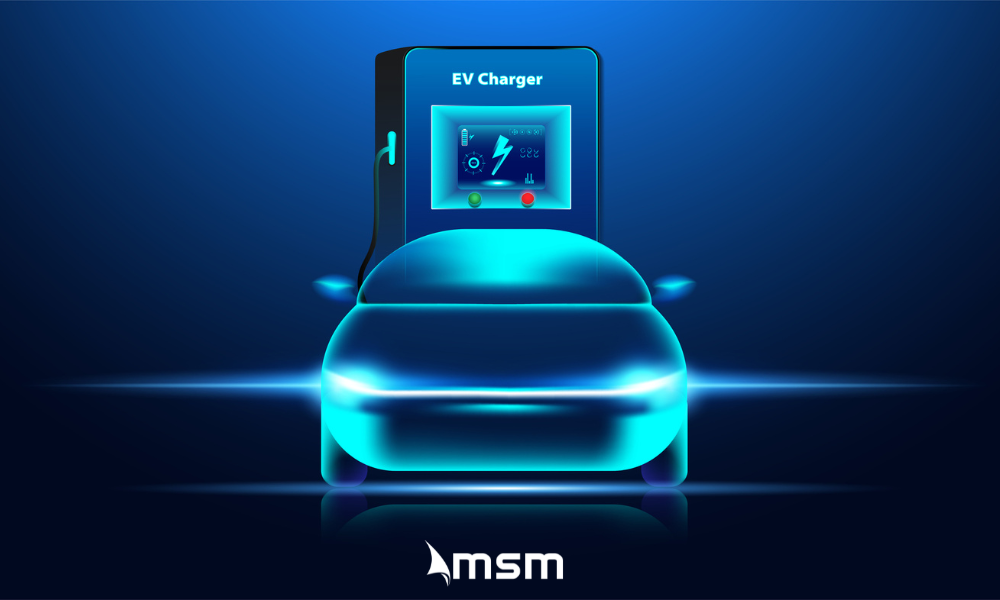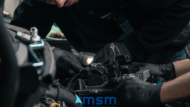In the field of EV vehicles, electric motor and vehicle control technologies are an intricate part of the fast-growing auto industry. But, unfortunately, there isn’t necessarily a best or worst option for consumers concerned about the environment, fuel efficiency, or personal efficacy for a reasonable cost.
According to sales, Tesla is the overall leader in environmental efficiency, while also maintaining low greenhouse emissions through their lofty miles-per-hour equivalent.
The automaker that Elon Musk built isn’t the only EV company in the world, though it has taken a long journey to get EVs back in the mainstream.
A Brief History Of EVs
Dating back hundreds of years ago, electric cars actually appeared before internal-combustion models. In the mid-1830s, Robert Anderson created a motorized carriage without a horse or ox. Robert Davidson improved on the design, demonstrating in 1841 a machine that could go 1.5 miles at four mph, towing only six tons. Unfortunately, railway workers were so alarmed at the threat to their job that they destroyed the machine.
Various self-propelled carriages appeared throughout the century. By the early 1900s, 600 electric cabs operated in New York. An ice arena was converted into a battery-swapping station, where driven cabs could have their spent batteries charged or replaced.
The Ford Model T was far more affordable and continued to get cheaper. The Model T was introduced to the market in 1908, and by 1923, the Model T was selling for under $300. Various attempts at producing EV cars occurred and failed over the next century, with many car manufacturers accused of being in cahoots with the auto and oil industries to hide the technology. It wasn’t until 2008, that Tesla first put lithium-ion batteries in a production car, demonstrating a 200-mile driving range. Now, EVs are back in the mainstream.
Offering electric vehicles has numerous perks at your dealership. These are the Benefits For EV Models (And What That Means For Your Dealership):
Get Money For Your Purchase
You read that right. If you buy or lease the EV car you love, you can get some of your money back. Federal, state, and local incentives bring down the cost of buying or leasing electric vehicles. You can find all the perks with an incentives search.
Substantial tax credits range from $2,500-$7,500, depending on the battery capacity. The CVRP is given to applicants with low-to-moderate household incomes. Dealers can also take advantage of local rebates and incentives by offering each through eligible air districts and electric utilities. There are also incentives for installing home charging stations that are available.
In 2019, middle-class buyers making over $100,000 marked the highest early adapters for EVs. This target market relies heavily on incentives before making a purchasing decision. These reduce consumer costs through tax credits, appeasing lawmakers’ policies to reduce carbon emissions by 2030.
Love Mother Earth
Since the industrial revolution occurred over 150 years ago, the transportation sector has served as the largest greenhouse gas producer, from manufacturing to operating.
EVs have been shown in studies to impact climate change positively. Vehicle emissions – powered explicitly by fossil fuels – account for 20% of all greenhouse gasses in the United States, the second largest gas emitter in the world. Full EVs boast the capability of producing zero tailpipe emissions.
The use and disposal of motor oil do not exist for EVs. Internal combustion auto fluids do not dissolve in water. These toxic chemicals can make living unsafe for humans and animals. Aside from eliminating the need for oil, EVs don’t use antifreeze or brake fluids containing heavy metals.
EVs do not contribute to modern oil spills, including broken pipelines on the seafloor or a refinery fire (I.e., the BP disaster, which spewed 4.2 million barrels of oil into the Gulf of Mexico.)
Offering EVs helps dealerships emphasize their brand activism. Taking a proactive approach to selling online, recycling, and going paperless could benefit a dealer in the eyes of some consumers. According to Nielsen, over 80% of global consumers say they feel companies should consider the environment, with millennials most likely to take this into consideration.
Save On Fuel & Maintenance Costs
Electric charging costs half the price of powering standard gasoline cars, assuming equal driving distances. Within the last year, there has been a growing availability of workplace and public charging stations, especially with disruptions in the fossil fuels industry. It’s easier than ever to find charging with apps or online maps.
Most EV cars have an added bonus of free fuel for three years offered by hydrogen fueling. The average U.S. household spends around one-fifth of its income on transportation. So an EV can save up to $1,000 in fuel each year.
Maintenance costs can also be addressed since the vehicle has far fewer moving parts. No longer are oil changes, spark plugs, or fuel filters needed. Braking is also assisted by regenerative technologies, extending the lifespan of brake pads by using the electric motor to decelerate the vehicle.
U.S. automakers must warranty EV batteries for a minimum of eight years/100,000 miles, pending whatever comes first. However, from user reviews, many EV battery packs have lasted more than 200,000 miles with less than 10% degradation in power capacity. Mostly, drivers only have to replace windshield wipers and tires.
Lead Competition
 It’s no secret that the EV market is profitable. As of this writing, the global electric vehicle market is valued at $163.01 billion. By 2030, it is expected to surpass $835 billion.
It’s no secret that the EV market is profitable. As of this writing, the global electric vehicle market is valued at $163.01 billion. By 2030, it is expected to surpass $835 billion.
An increase in demand for fuel-efficient, high-performance, and low-emission vehicles has inspired competition, due to many consumers’ desire for an alternative fuel source. Other factors include the rising price of petrol or diesel, companies gaining maximum profit on dwindling energy reserves, and growing environmental concerns (as discussed previously).
Because there is intensifying competition in EV commercialization, business models may include cooperation with ride-share corporations or direct participation in the ride-share market. Others will attempt to win share through high-end differentiation.
Several have already emulated Tesla’s services by offering robust design through high-end, premium manufacturing (Chevy Bolt, Mercedes, etc.) Millennials represented the most significant percentage of those motivated by the reduced cost of gas and shared the most significant percentage with Boomers for environmental motivation. Millennials are looking for a good car that suits their needs; specifically, for EVs, they are interested in the environmental benefits and the convenience of not having to stop at a petrol station.
There are a lot of challenges facing auto dealerships today, but electric vehicles may be the light at the end of the tunnel to help several car dealerships generate more revenue through the next decade.







